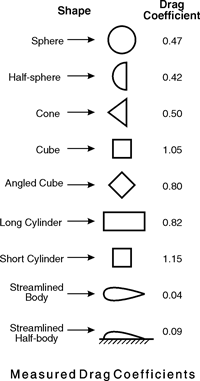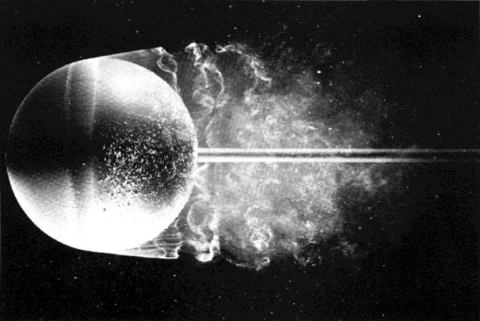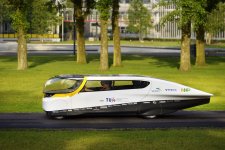[youtube]_uMB2Va635A[/youtube]
Pretty clever design, in my opinion. It uses the teardrop shape, which is the most efficient shape in the world, while using solar tracking inside the teardrop to maximize solar power.
http://www.worldsolarchallenge.org/team_info/overview
Apparently the countdown for the race is 20 days from now. Can't wait!

Look at the effective frontal area on that perfect prone streamliner! That's like almost a 100x improvement over a regular bike! Now only if there was a way to integrate that design into a *relatively* practical vehicle. (Not like 4-person + groceries kind of practical, more like, 1 person and can comfortably travel over 1000+ miles at 60mph on regular highways kind of practical, possibly with a bag of groceries.)

Look at the drag coefficient on the streamlined body! Yowza! Notice that a fish, an animal with the greatest fluid dynamic efficiency demands in the world, is shaped just like a streamlined body.
[Btw, for those who don't understand the importance of aero, aerodynamics is extremely important for range and speed. If you could take your average electric bike with battery panniers hanging off the side and somehow transform it into the most efficient shape in the world, you could possibly increase range by upto a factor of 100x. That is, an ordinary 25 mile range becomes a 2500 mile range. If batteries are limited in range, than aero is a possible solution.]
Pretty clever design, in my opinion. It uses the teardrop shape, which is the most efficient shape in the world, while using solar tracking inside the teardrop to maximize solar power.
http://www.worldsolarchallenge.org/team_info/overview
Apparently the countdown for the race is 20 days from now. Can't wait!

Look at the effective frontal area on that perfect prone streamliner! That's like almost a 100x improvement over a regular bike! Now only if there was a way to integrate that design into a *relatively* practical vehicle. (Not like 4-person + groceries kind of practical, more like, 1 person and can comfortably travel over 1000+ miles at 60mph on regular highways kind of practical, possibly with a bag of groceries.)

Look at the drag coefficient on the streamlined body! Yowza! Notice that a fish, an animal with the greatest fluid dynamic efficiency demands in the world, is shaped just like a streamlined body.
[Btw, for those who don't understand the importance of aero, aerodynamics is extremely important for range and speed. If you could take your average electric bike with battery panniers hanging off the side and somehow transform it into the most efficient shape in the world, you could possibly increase range by upto a factor of 100x. That is, an ordinary 25 mile range becomes a 2500 mile range. If batteries are limited in range, than aero is a possible solution.]







